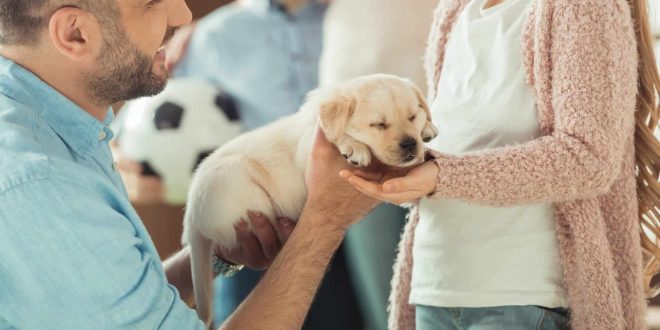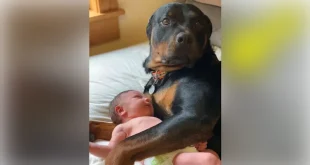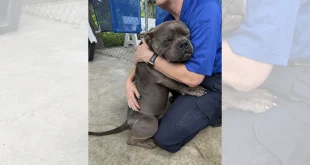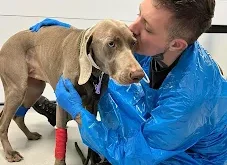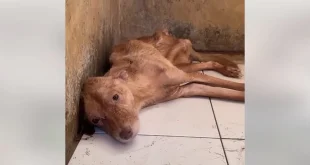Becoming a dog parent for the first time is an exciting and rewarding experience, but it also comes with a lot of responsibilities. Whether you’re adopting a puppy or bringing home an adult dog, there’s plenty to consider to ensure your new furry friend has a happy and healthy life. Here’s a comprehensive guide for first-time dog owners to help you navigate the journey!
1. Preparing Your Home for Your New Dog
Before your dog arrives, make sure your home is ready. Here are a few things to do:
- Dog-Proof Your Home: Just like baby-proofing, you’ll need to make sure your home is safe for your dog. Remove any hazardous items, such as toxic plants, electrical cords, and small objects that could be swallowed.
- Set Up a Dog-Friendly Space: Create a cozy area where your dog can relax. This could be a crate, a bed, or a quiet corner where they feel safe.
- Buy the Essentials: You’ll need food and water bowls, a leash, collar, identification tags, a comfortable bed, toys for mental stimulation, and grooming tools like a brush and nail clippers.
Choosing the Right Dog for Your Lifestyle
Choosing the right dog breed is key to a happy life together. Consider the following:
- Energy Level: Some dogs require lots of exercise, while others are content with a few short walks. Make sure the dog’s energy level aligns with your lifestyle.
- Size: Ensure the dog’s size fits well with your living space, especially if you live in an apartment or have a small yard.
- Temperament: Different breeds have different personalities. Consider whether you want an independent dog or one that craves lots of attention.
- Age: Puppies require a lot of training and patience, while adult dogs may already have established behaviors. Make sure you’re prepared for the needs of the age group you choose.
The First Few Days at Home
Your new dog will need time to adjust to its new environment, and you should be prepared to provide comfort and structure.
- Establish a Routine: Dogs thrive on routine, so try to feed, walk, and train your dog at the same times each day. This helps them feel secure and understand what to expect.
- Slow Introductions: Allow your dog time to explore your home at their own pace. Don’t overwhelm them with too much stimulation too soon.
- Patience is Key: Your dog might be nervous or even a bit scared at first. Be patient and allow them to adjust in their own time.
Training Your Dog
Training is crucial for building a bond with your dog and ensuring they behave well at home and in public.
- Start with the Basics: Teach your dog essential commands like “sit,” “stay,” and “come.” These will help you communicate better with them and keep them safe.
- Positive Reinforcement: Reward your dog with treats, praise, or toys when they do something correctly. Positive reinforcement encourages good behavior.
- Consistency: Be consistent in your training. Use the same commands and methods each time to avoid confusing your dog.
- Socialization: Early socialization with other dogs, people, and various environments is key for helping your dog become well-adjusted and confident.
Feeding Your Dog
Proper nutrition is essential for your dog’s health and well-being.
- Choose the Right Food: Consult your vet about the best food for your dog’s age, breed, and health needs. Make sure it’s nutritionally balanced and suited to their life stage (puppy, adult, or senior).
- Establish a Feeding Schedule: Dogs do best with a consistent feeding schedule. Most adult dogs eat twice a day, while puppies may need three meals. Avoid overfeeding to prevent obesity.
- Fresh Water: Always provide your dog with access to fresh, clean water throughout the day.
Regular Exercise
Physical activity is important for your dog’s health and happiness.
- Daily Walks: Take your dog on daily walks to burn off energy and provide mental stimulation. The length and intensity of the walk should be appropriate for your dog’s breed and energy level.
- Playtime: Engage your dog in interactive play with toys like fetch or tug-of-war. This is a great way to bond and keep your dog active.
- Mental Stimulation: Dogs need mental exercise too! Use puzzle toys, obedience training, or scent games to challenge your dog’s mind.
Health Care and Vet Visits
Keeping your dog healthy requires regular vet visits and preventive care.
- Vet Check-Ups: Schedule an initial check-up with your vet soon after bringing your dog home. Regular check-ups will help catch any health issues early and ensure your dog stays in top shape.
- Vaccinations and Preventive Care: Keep your dog up to date on vaccinations, flea and tick prevention, and heartworm prevention. Your vet will guide you on when and how to administer these.
- Spaying/Neutering: If your dog isn’t already spayed or neutered, discuss the benefits and timing with your vet.
- Dental Care: Just like humans, dogs need dental care! Regular brushing, dental chews, and professional cleanings will help maintain healthy teeth and gums.
Grooming Your Dog
Keeping your dog clean and well-groomed is important for their health and comfort.
- Brushing: Regular brushing keeps your dog’s coat shiny and reduces shedding. The frequency of brushing depends on your dog’s coat type.
- Bathing: Bathe your dog as needed, typically every 4-6 weeks. Use dog-friendly shampoo to avoid skin irritation.
- Nail Trimming: Regularly trim your dog’s nails to prevent them from getting too long and causing discomfort.
- Ear and Teeth Care: Keep your dog’s ears clean and free from infection, and brush their teeth to prevent dental issues.
Building a Strong Bond
The bond between you and your dog is the foundation of a great relationship.
- Spend Quality Time Together: Whether it’s cuddling on the couch, going for a walk, or training, make sure you spend time with your dog every day.
- Positive Reinforcement: Show your dog love and appreciation through treats, praise, and affection when they behave well.
- Be Patient: Building trust and a strong relationship with your dog takes time. Don’t rush the process, and be understanding of their individual needs.
Safety and Identification
Ensuring your dog’s safety is essential.
- Identification: Make sure your dog has a collar with an ID tag that includes your contact information. A microchip is also a good idea, as it can help locate your dog if they get lost.
- Dog-Proof Your Yard: If you have a yard, ensure the fence is secure so your dog can’t escape. Supervise your dog when outside to prevent accidents.
- Travel Safely: When in a car, secure your dog with a seatbelt harness, crate, or dog seatbelt to prevent distractions and keep them safe.
Final Thoughts
Owning a dog for the first time is an amazing journey filled with love, joy, and learning. By following this guide, you’ll be well on your way to providing a happy, healthy, and fulfilling life for your new dog. Remember, patience and consistency are key, and don’t hesitate to reach out to your vet or a professional trainer if you need help along the way. Enjoy the ride—your new best friend is sure to bring endless joy and companionship into your life!
 PAWS AND WHISKERS PET CARE
PAWS AND WHISKERS PET CARE
